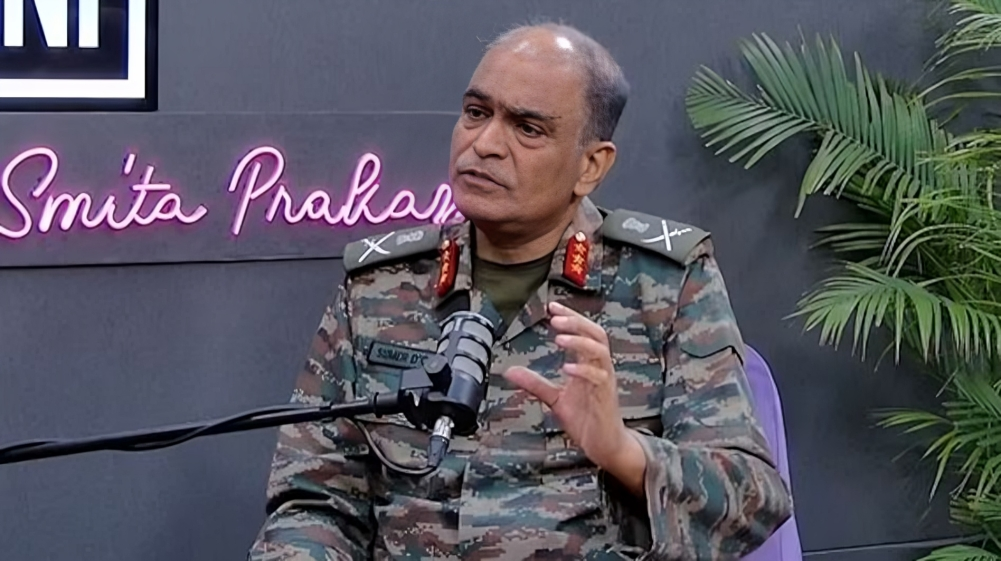In a firm message to Pakistan and the global community, Lieutenant General Sumer Ivan D’Cunha, Director General of Army Air Defence, declared that India possesses the capability to strike any location within Pakistan, regardless of where its military headquarters might relocate. Speaking to ANI in the aftermath of Operation Sindoor, the senior Army officer said, “From its broadest to its narrowest, the whole of Pakistan is within range. Even if their GHQ moves from Rawalpindi to Khyber Pakhtunkhwa or anywhere else, they will still be within our reach.”
The remarks follow India’s unprecedented multi-domain military response to the May 7 Pahalgam terror attack, during which Indian forces launched Operation Sindoor. The operation featured a mix of aerial precision strikes, drone warfare, mechanised ground action, and electronic warfare, with targets ranging from terror camps in PoK to airbases and radars deep inside Pakistan.
Lt Gen D’Cunha highlighted that India has not only built conventional deterrence but also embraced a doctrine of proactive defence, relying on a potent mix of indigenous technologies. During Operation Sindoor, India employed long-range drones, loitering munitions, and electronic warfare systems developed within the country, enabling highly accurate and risk-free targeting of enemy positions.
One of the most significant aspects of Operation Sindoor, according to the general, was India’s success in neutralising incoming drone and missile threats from Pakistan. The Indian Army had anticipated such tactics and conducted drone simulation exercises from April 26 to 28, just days before the operation. These drills trained personnel to respond to mass drone attacks and refine radar management techniques, ensuring minimal exposure to enemy detection.
“Our troops were ready before the first drone crossed over,” said Lt Gen D’Cunha. “We held drills simulating wave after wave of drones. This gave our teams the muscle memory to respond rapidly and effectively.”
Indian forces also demonstrated a high level of inter-service coordination. The operation was guided by real-time satellite and surveillance data, supported by intermittent radar activity to avoid detection. The Indian Air Force’s Netra AEW&C aircraft played a vital role in jamming Pakistani radars, giving Indian drones and fighters uncontested airspace over their targets.
Precision strikes during Operation Sindoor included targeted hits on high-value Pakistani military assets. Loitering munitions, launched from stand-off distances, successfully destroyed enemy radars, missile systems, and key assets at airbases like Noor Khan and Rahimyar Khan. The strikes were conducted without a single loss to Indian equipment or personnel.
Lt Gen D’Cunha also emphasized the psychological impact of the operation—not just on the adversary, but on the Indian population and the armed forces themselves. “Our people, including families living in cantonments, felt reassured. Soldiers felt pride. Civilians saw what our forces can do when tested. That confidence is perhaps the biggest takeaway.”
The general described the operation as a practical demonstration of the “Shishupala Doctrine”—a philosophy of patience until a red line is crossed, followed by swift and overwhelming retaliation. “This wasn’t just a response. This was a message,” he added.
Reflecting on global military trends, Lt Gen D’Cunha pointed out the increasingly central role of drones in modern warfare. Citing conflicts in Ukraine, Nagorno-Karabakh, and Israel, he said, “Drones are changing everything. Countries are now building drone arsenals in the millions. India, too, is rapidly indigenising and scaling its drone capabilities.”
India’s success in Operation Sindoor underlined its evolution into a military power that can integrate advanced technologies, anticipate threats, and respond with speed and precision. The message from Lt Gen D’Cunha was unambiguous: India’s entire arsenal—from conventional missiles to cutting-edge electronic warfare—is ready to act across all domains, and Pakistan’s geography offers no sanctuary from retaliation.













